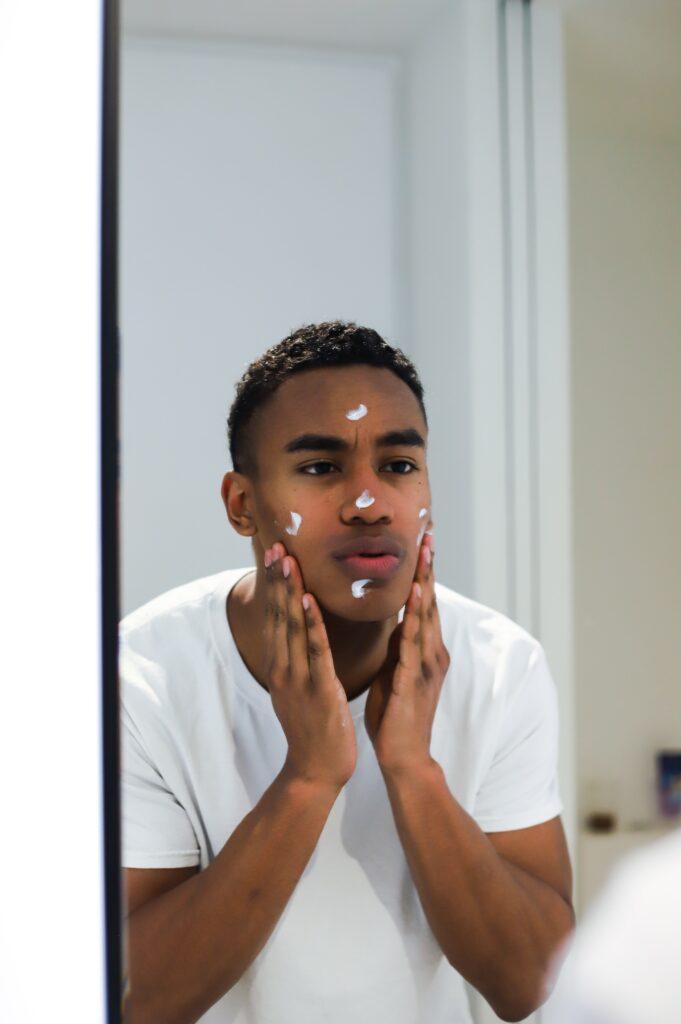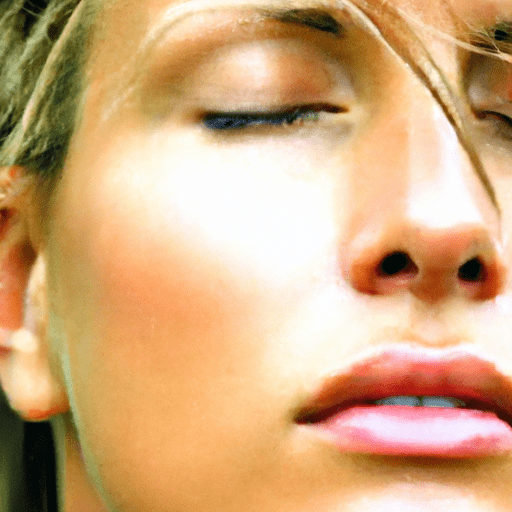You’ve probably heard about Nizoral, the popular anti-dandruff shampoo that works wonders for those pesky flakes. But did you know that it can also be used to treat fungal acne? That’s right! In this article, we’ll show you exactly how to use Nizoral to effectively combat fungal acne and achieve clear, radiant skin. Say goodbye to those stubborn breakouts and hello to a healthier complexion!
What is Nizoral?
Overview of Nizoral
Nizoral is a popular brand of antifungal medication that is commonly used to treat a variety of skin conditions, including fungal acne. It is available over-the-counter and is known for its effectiveness in combating fungal infections on the skin. Nizoral comes in different formulations, including shampoo and cream, making it versatile for various treatment needs.
Active ingredient in Nizoral
The active ingredient in Nizoral is ketoconazole. Ketoconazole is a powerful antifungal medication that works by inhibiting the growth of fungi and yeast on the skin. It targets the cell membranes of these organisms, disrupting their ability to thrive and causing them to die off. As a result, it effectively treats fungal acne by eliminating the underlying cause of the infection.
How does Nizoral work for fungal acne?
Fungal acne, also known as pityrosporum folliculitis, is a common skin condition caused by an overgrowth of yeast on the skin. The yeast, known as Malassezia, can clog hair follicles and lead to small, itchy bumps or pustules on the affected areas. Nizoral works by addressing the root cause of fungal acne – the overgrowth of Malassezia.
When applied to the affected area, Nizoral’s active ingredient, ketoconazole, fights against the yeast and fungus. It disrupts their cell membranes, weakening their structure and inhibiting their ability to grow and reproduce. This ultimately leads to the elimination of the yeast and the resolution of fungal acne symptoms. Nizoral not only treats the existing acne but also helps prevent future outbreaks by controlling the yeast population on the skin.
Understanding Fungal Acne
What is fungal acne?
Fungal acne is a specific type of acne that is caused by an overgrowth of yeast on the skin. Unlike traditional acne, which is caused by bacteria and oil clogging the pores, fungal acne occurs when the natural yeast found on the skin, usually Malassezia, proliferates and leads to an infection in the hair follicles. This results in the development of small, itchy bumps or pustules that can resemble regular acne but have different underlying causes.
Causes of fungal acne
Fungal acne can be caused by various factors, including excessive sweating, hot and humid climates, hormonal imbalances, or a compromised immune system. These conditions create an optimal environment for the overgrowth of yeast on the skin, leading to the development of fungal acne. It is important to note that poor hygiene is not a direct cause of fungal acne. In fact, excessive washing or scrubbing can disrupt the skin’s natural balance and worsen the condition.
Symptoms of fungal acne
Fungal acne presents with distinct symptoms that differentiate it from traditional acne. The most common symptoms include small, uniform red or skin-colored bumps that may be itchy or tender to the touch. These bumps can also form pustules that contain pus. Fungal acne typically appears on the chest, back, shoulders, and face – areas where the sebaceous glands are most active. If you are experiencing these symptoms, it is essential to consult with a healthcare professional for an accurate diagnosis and appropriate treatment.

Choosing the Right Nizoral Product
Different Nizoral formulations
Nizoral is available in different formulations, including shampoo and cream, to suit various treatment needs. Nizoral shampoo is primarily used for treating fungal infections on the scalp, such as dandruff and seborrheic dermatitis, but can also be effective for fungal acne in other areas. Nizoral cream is specifically designed for use on the skin and can be applied directly to the affected areas. Both formulations contain ketoconazole, the active ingredient responsible for the antifungal properties of Nizoral.
Which Nizoral product is suitable for fungal acne?
When choosing a Nizoral product for treating fungal acne, it is important to consider the location of the affected areas. If the fungal acne is primarily concentrated on the scalp, Nizoral shampoo is the preferred option. However, if the acne is present on the face, chest, back, or other areas of the body, Nizoral cream is more suitable. The cream formulation allows for targeted application to the affected areas, ensuring maximum efficacy and optimal results.
Preparing the Skin for Application
Cleansing the affected area
Prior to applying Nizoral, it is crucial to cleanse the affected area thoroughly. Use a gentle cleanser that is suitable for your skin type to remove any dirt, oil, or impurities that may be present on the skin surface. Avoid using harsh cleansers or scrubbing vigorously, as this can further irritate the skin and exacerbate the condition. Pat the skin dry gently with a clean towel after cleansing.
Drying the skin
After cleansing, it is important to ensure that the skin is completely dry before applying Nizoral. Moisture can create an environment that promotes the growth of yeast and fungus, hindering the effectiveness of the medication. Allow the skin to air dry naturally or use a clean towel to gently pat it dry. Avoid rubbing the skin vigorously, as this can cause irritation.
Precautions before using Nizoral
Before using Nizoral, it is essential to read and follow the instructions provided with the product carefully. Some precautions to keep in mind include:
- Performing a patch test: Apply a small amount of Nizoral to a small area of the skin and wait 24 hours to check for any adverse reactions, such as redness or itching. If there is no negative reaction, it is generally safe to proceed with the full application.
- Avoiding contact with eyes: Nizoral should not come into contact with the eyes. If accidental contact occurs, rinse thoroughly with water.
- Consulting a healthcare professional: If you are pregnant, breastfeeding, have a pre-existing medical condition, or are taking any other medications, it is important to consult with a healthcare professional before using Nizoral.
Application Process
Step-by-step guide for using Nizoral
- Start by dispensing a small amount of Nizoral onto clean fingertips.
- Gently apply the Nizoral to the affected areas, ensuring complete coverage of the acne-prone skin. If using Nizoral shampoo for facial acne, lather the affected areas and leave it on for a few minutes before rinsing off.
- Massage the Nizoral into the skin using circular motions to aid absorption.
- Allow the Nizoral to sit on the skin for the recommended duration specified on the product packaging. This ensures that the active ingredient has sufficient time to work effectively.
- After the recommended duration, rinse off the Nizoral thoroughly with lukewarm water. Make sure to remove all traces of the product from the skin.
- Gently pat the skin dry with a clean towel, taking care not to rub or irritate the treated areas.
How often to use Nizoral for fungal acne
The frequency of Nizoral application for fungal acne can vary depending on the severity of the condition and the specific product being used. It is generally recommended to use Nizoral once or twice a day for optimal results. However, it is important to follow the instructions provided with the product or consult with a healthcare professional for personalized guidance.
Areas to apply Nizoral
The areas where Nizoral should be applied depend on the location of the fungal acne. If the acne is present on the scalp, Nizoral shampoo should be applied to the affected areas of the scalp and hair. For acne on the face, chest, back, or other parts of the body, Nizoral cream can be directly applied to the affected areas. Ensure that the product is evenly spread and thoroughly rubbed into the skin for maximum efficacy.
Tips for Effective Use
Avoiding skin irritation
While Nizoral is generally safe and well-tolerated, some individuals may experience skin irritation or allergic reactions. To minimize the risk of irritation, it is important to:
- Perform a patch test before the first use, as mentioned earlier, to check for any adverse reactions.
- Use the product as directed and avoid over-application. Applying too much Nizoral or using it more frequently than recommended can lead to excessive drying or irritation of the skin.
- Avoid using harsh cleansers, exfoliants, or other potentially irritating skincare products in conjunction with Nizoral. Stick to gentle products that are suitable for sensitive skin.
- Use a moisturizer suitable for your skin type to keep the skin hydrated and prevent excessive dryness. Apply the moisturizer after Nizoral has been fully absorbed into the skin.
Combining Nizoral with other acne treatments
Nizoral can be used in conjunction with other acne treatments to complement their effectiveness. However, it is important to consult with a healthcare professional or dermatologist before combining different products. They can provide guidance on the best approach for your specific skin condition and recommend any necessary adjustments to your skincare routine.
Maintaining a skincare routine
In addition to using Nizoral, maintaining a consistent and gentle skincare routine is essential for managing fungal acne effectively. This includes:
- Cleansing the skin twice daily with a gentle cleanser suitable for your skin type.
- Using non-comedogenic and oil-free skincare products to avoid clogging the pores and exacerbating acne.
- Avoiding excessive touching or picking at the skin, as this can introduce bacteria or further irritate the affected areas.
- Regularly washing pillowcases, towels, and other items that come into contact with the skin to prevent bacterial or fungal buildup.

Expected Results and Timeline
How long does it take to see results?
The timeline for seeing results with Nizoral can vary depending on the individual and the severity of the fungal acne. Some individuals may notice improvements within a few days of starting treatment, while others may require several weeks to see a significant difference. Consistency is key when using Nizoral for fungal acne, so it is important to follow the recommended application frequency and duration to achieve the best results.
Common improvements with Nizoral use
When used as directed, Nizoral can effectively treat fungal acne and provide relief from its symptoms. Common improvements seen with Nizoral use include a reduction in the number and size of acne bumps, decreased redness and inflammation, and an overall improvement in the appearance and texture of the skin. With continued use, Nizoral helps restore the skin’s natural balance and prevent future outbreaks.
Possible Side Effects
Common side effects of Nizoral
While side effects with Nizoral are generally rare, some individuals may experience mild side effects. These can include itching, redness, dryness, or a stinging sensation in the treated areas. These side effects are usually mild and temporary, subsiding as the skin adjusts to the medication. If any persistent or severe side effects occur, it is important to discontinue use and consult with a healthcare professional for further guidance.
Precautions to take while using Nizoral
When using Nizoral for fungal acne, it is important to keep the following precautions in mind:
- Avoid using Nizoral on broken or damaged skin, as this can increase the risk of irritation or absorption of the medication into the bloodstream.
- Limit sun exposure while using Nizoral, as it can make the skin more sensitive to the sun’s rays. If prolonged sun exposure is unavoidable, apply a broad-spectrum sunscreen with an SPF of 30 or higher to protect the skin.
- If using Nizoral shampoo, avoid getting the product into the eyes. If accidental contact occurs, rinse with water immediately.
- If you experience any unexpected or severe side effects while using Nizoral, discontinue use and seek medical advice.

Follow-up and Maintenance
Monitoring progress and adjusting usage
As you continue to use Nizoral for fungal acne, it is important to monitor your progress and evaluate the effectiveness of the treatment. Keep track of any changes in the appearance of your skin, the frequency of outbreaks, and any side effects experienced. If you notice that the treatment is not yielding the desired results or if you experience any adverse reactions, it may be necessary to consult with a healthcare professional for further evaluation and potential adjustments to your treatment plan.
Long-term maintenance for fungal acne
Fungal acne can be an ongoing concern for some individuals, requiring long-term maintenance to prevent future outbreaks. To maintain the positive effects of Nizoral and minimize the risk of recurrence, consider incorporating the following into your long-term skincare routine:
- Regularly cleanse and moisturize the skin with gentle and suitable products.
- Avoid excessive sweating by practicing good hygiene and wearing breathable clothing.
- Use non-comedogenic and oil-free sunscreen when exposed to the sun to protect the skin without clogging the pores.
- Keep stress levels in check, as stress can contribute to imbalances in the skin.
By adopting these habits, you can help maintain a healthy balance on the skin and minimize the risk of fungal acne flare-ups.
Consulting a Dermatologist
When to seek professional advice
While Nizoral can be effective in treating fungal acne, there may be instances where seeking professional advice from a dermatologist is necessary. Consider consulting a dermatologist if:
- The fungal acne does not improve or worsen after several weeks of using Nizoral as directed.
- You experience severe side effects or adverse reactions to Nizoral.
- You have previously been diagnosed with a skin condition or have underlying health issues that may require a tailored treatment approach.
A dermatologist can provide a comprehensive evaluation of your skin condition, recommend appropriate treatment options, and guide you on the best course of action for managing your fungal acne.
Professional guidance for using Nizoral
When consulting with a dermatologist, they can provide personalized guidance on the use of Nizoral for fungal acne based on your specific needs and medical history. They may recommend specific application techniques, adjust the frequency of use, or suggest complementary treatments to enhance the effectiveness of Nizoral. By seeking professional advice, you can ensure that you are receiving the most appropriate care for your fungal acne and optimize the chances of achieving clear, healthy skin.
Conclusion
In conclusion, Nizoral is a reliable and effective treatment option for fungal acne. By understanding the causes and symptoms of fungal acne, choosing the right Nizoral formulation, properly preparing the skin for application, following the step-by-step application guide, and implementing tips for effective use, you can effectively manage and treat fungal acne. While using Nizoral, it is important to monitor progress, be aware of possible side effects, and seek professional guidance when needed. With the appropriate care and consistency, you can achieve clear and healthy skin, free from the burdens of fungal acne.
More about How To Use Panoxyl Acne Foaming Wash




